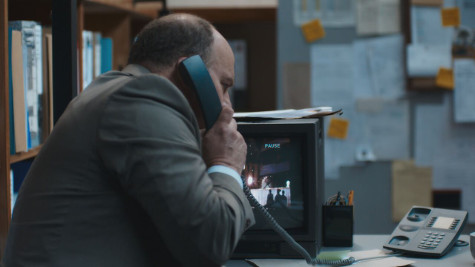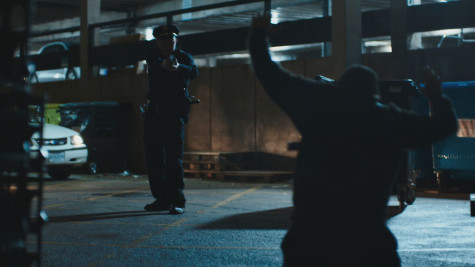
The bombings in Atlanta, GA—starting with the most publicized bombing at Centennial Park during the Summer Olympics—hold a special fascination for me. It might hit closer to home than the average viewer because of how it affected family friends during the manhunt for the bomber. But before I get to that, let’s begin at the beginning.
Beyond Reasonable Doubt’s next episode, “The Atlanta Bombings,” airs Sunday, July 2nd at 8 pm ET/PT. It covers the investigation from beginning to end, detailing how they gathered evidence and developed brand new technology to help capture their suspect.
Admittedly, my own memories of these bombings are a little fuzzy. I lived in South Carolina at the time, and I was just a teenager. Everyone in the South seemed alive with excitement about the Centennial Olympic Games that summer because they were practically in our backyard. We lived about an hour outside of Savannah, Georgia, and the sports taking place along the Savannah River gave everyone a sense of regional pride. My dad had recently come back from a work trip to Atlanta, or “Hot-lanta” as we all called it.
The 1990s were an anxious time. In 1993, Al Qaeda successfully detonated a truck bomb at the World Trade Center. The so-called Army of God murdered an abortion clinic doctor in Pensacola in 1994. Ted Kaczynski, aka the Unabomber, was sending mail bombs around the country. And one of the largest acts of terrorism on American soil occurred when Timothy McVeigh and Terry Nichols drove a truck bomb into Oklahoma City’s Alfred P. Murrah Federal Building, motivated by revenge for Waco. All of these events, I believe, fed into the serial bombings of locations in and around Atlanta in the late ‘90s.
This episode, as in the other episodes in this series, takes a deeper look at how evidence was gathered and processed in order to catch the man responsible for the bombings. The police detectives, FBI agents, and lab technicians who worked on the case gave remarkable insight into how they put the pieces together, from identifying the chemical makeup of the bombs to testing and matching metal pieces from each bomb to connect them. There were four bombs in total.
I think the most astonishing revelation for me centered around the use of NASA’s Hubble technology to help them refine video tape of the first bomb. Interestingly, NASA’s technology wasn’t good enough to destabilize and clarify the tape. Remember, this is 1996 and digital technology for video wasn’t in use at the time. Actual VHS tapes were the height of technology then, as far as video recording goes, so new technology needed to be developed via computer coding to create something that could sharpen the images and get a clearer picture of the suspect and the bomb itself.

It was really fascinating to see that in action, to be honest. It was the early days of this kind of technology, and it helped immensely in moving the investigation forward. The detectives now had a basic description of the bomber, and they were able to determine—along with other evidence gathered at the scene—that they had a lone wolf, possibly an ex-military, anti-abortion male who sympathized with the Army of God and sought revenge for Waco on his own.
At the final bombing at an abortion clinic in Birmingham, Alabama, a keen-eyed medical student noticed a man casually strolling away from the scene while others rushed toward it to help. He followed the man and got his license plate number, which detectives were later able to run. The plate number came back to Eric Robert Rudolph, and he matched the physical description of the man on the tape, right down to his boots. This kicked off a massive manhunt for one of the FBI’s ten most wanted.
Eric Robert Rudolph was from Asheville, North Carolina, a beautiful city in the heart of Appalachia—a region known for anti-government sentiment and the formation of militias that were meant to protect citizens from the tyranny of government. Rudolph knows these dense forests that stretch across mountains for miles better than anyone else, and he managed to hide in those forests for five years.
My own personal anecdote comes into play here. A very close friend of our family once owned a summer house in those very same mountains. It was a place we visited nearly every summer during those days. What this episode doesn’t mention is that Eric Robert Rudolph broke into that house and camped there, only to be chased off when the FBI got too close. It’s a bit of a chilling thing to imagine a serial bomber and unpredictably violent individual living in your home. Fortunately, he was caught later in Murphy, NC, when a rookie police officer on patrol saw a suspicious figure he thought was attempting a burglary. Rudolph was unarmed and did not resist arrest.

Those interested in the inner workings of law enforcement as well as the investigation and capture of elusive criminals such as Eric Robert Rudolph will thoroughly enjoy this episode. And if you’re looking for more about developments in bomb squad units and bombing investigations after watching this fascinating episode, check out Incendiary by Michael Cannell, which I reviewed right here on Criminal Element.
Watch the trailer for the next episode of Beyond Reasonable Doubt, airing on HLN on Sunday, July 2nd at 8:00 pm ET/PT:
See also: Beyond Reasonable Doubt: “The Murdered Bride” Episode Review
Ardi Alspach was born in Florida, raised in South Carolina, and now resides in New York City with her cat and an apartment full of books. By day, she's a publicist, and by night, she's a freelance writer. You can follow her on Twitter at @ardyceelaine or check out her website at ardyceelaine.wordpress.com.

On Monday, a 22-year-old man was arrested in connection with a breach of the peace after reportedly heckling Prince Andrew as the royal procession moved along Edinburgh’s Royal Mile.